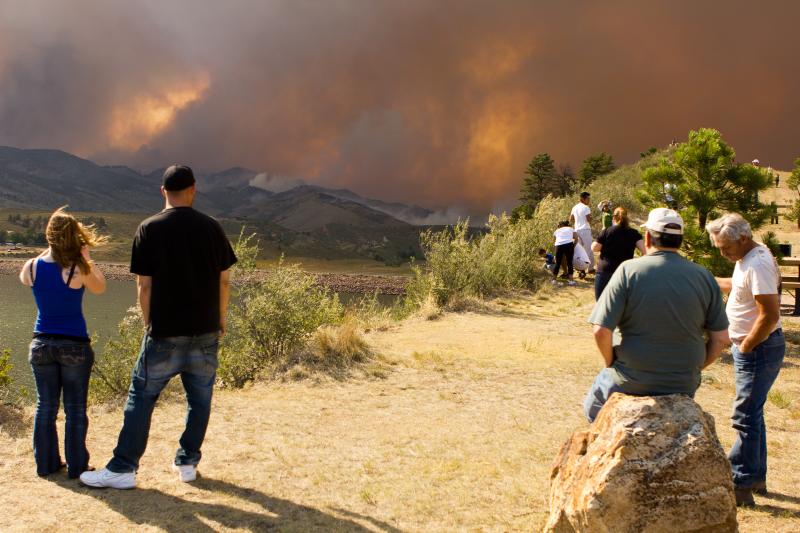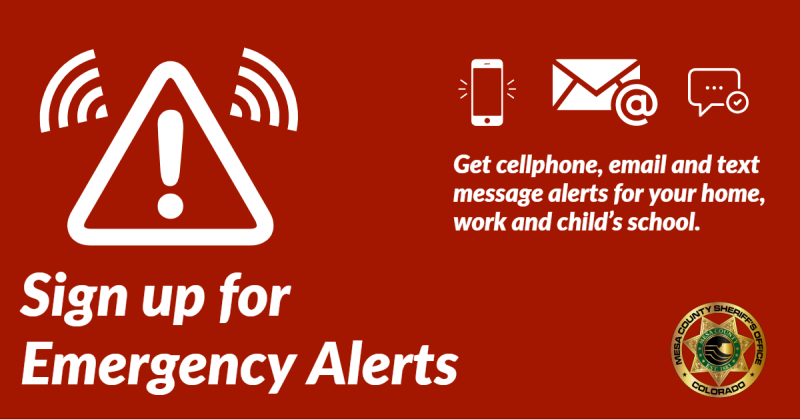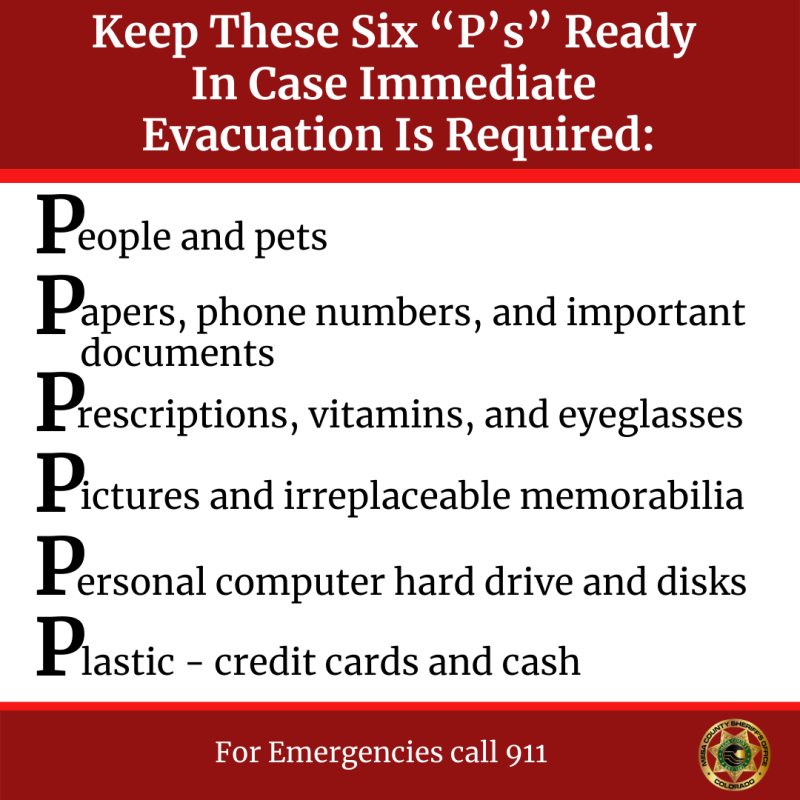During a wildfire
Evacuation orders for Mesa County
There are no evacuation orders currently in Mesa County
Be prepared for a wildfire
- Stay tuned to your local radio and television stations for evacuation updates.
- Seal attic and ground vents.
- Close all doors inside your home to prevent drafts.
- Wet your roof and shrubs within 15 feet of your home.
- Notify relatives and local officials that you have left your home and where you can be reached.
- Turn on outside lights and leave a light on in every room.
- This allows the home to be more visible in heavy smoke.
- Turn off the gas and pilot lights.
Emergency alerts
Sign up for Emergency Alerts
- Mesa County uses an Emergency Notification System to provide essential information quickly during an emergency.
- Landlines are automatically signed up for the Emergency Notification System.
- Cell phone users need to sign up.
You can sign up here to get an alert sent to your cell phone.
How to prepare for evacuation
When a pre-evacuation order is issued, follow these checklists (if time allows) to give your home the best chance of surviving a wildfire.
Home Evacuation Checklist
Inside the House
- Have your Emergency Supply Kit/Evacuation Bag ready to go.
- Ensure a Wildfire Action Plan is prepared ahead of time.
- Make sure you know your community’s emergency response plan and have a plan on where to go when it is time to evacuate and the best routes for leaving your location.
- Shut all windows and doors, leaving them unlocked.
- Remove flammable window shades and curtains and close metal shutters.
- Remove lightweight curtains.
- Move flammable furniture to the center of the room, away from windows and doors.
- Shut off the gas at the meter; turn off the pilot lights.
- Leave your lights on so firefighters can see your house under smoky conditions.
- Shut off the air conditioning.
Outside the House
- Gather up flammable items from the house's exterior and bring them inside (patio furniture, children’s toys, door mats, trash cans, etc.) or place them in your pool.
- Turn off propane tanks.
- Move propane BBQ appliances away from structures.
- Connect garden hoses to outside water valves or spigots for use by firefighters. Fill water buckets and place them around the house.
- Don’t leave sprinklers on or water running. That can affect critical water pressure.
- Leave exterior lights on so your home is visible to firefighters in the smoke or darkness of the night.
- Put your Emergency Supply Kit in your vehicle.
- Back your car into the driveway with the vehicle loaded and all doors and windows closed. Carry your car keys with you.
- Have a ladder available and place it at the corner of the house for firefighters to quickly access your roof.
- Seal attic and ground vents with pre-cut plywood or commercial seals.
- Patrol your property and monitor the fire situation. Don’t wait for an evacuation order if you feel threatened.
- Check on neighbors and make sure they are preparing to leave.
Animals
- Locate your pets and keep them nearby.
- Prepare farm animals for transport and consider moving them to a safe location early.
- If you need assistance evacuating or sheltering livestock, call 970-244-1835.
- Learn more
Information for Preparing for a Wildfire
Provided by the Ready for Wildfire website.
Evacuation preparation steps
When an evacuation order is issued, leave the area immediately.
If you need assistance with evacuating, please 911.
Evacuation: What to take and what to do
- Review your Evacuation Plan Checklist.
- Ensure your Emergency Supply Kit is in your vehicle.
- Cover-up to protect against heat and flying embers.
- Long pants and long sleeve shirt - 100% cotton is preferable
- Heavy shoes/boots
- Cap and dry bandanna for face cover
- Goggles or glasses
- Locate your pets and take them with you.
If you need help with evacuating or sheltering livestock, please 970-244-1835.
Keep these Six "P's" ready if immediate evacuation is required.
- People and Pets
- Papers, phone numbers, and important documents
- Prescriptions, eyeglasses, and vitamins
- Pictures and irreplaceable memorabilia
- Personal computer hard drives and disks
- Plastic - credit cards and cash
When to evacuate
Leave as soon as an evacuation order is issued.
- Evacuate the area as soon as possible
- Helps firefighters keep roads clear of congestion
- Lets firefighters move more freely to do their job
- In an intense wildfire, they will not have time to knock on every door.
- If you are advised to leave, don’t hesitate!
Officials will determine the areas to be evacuated and escape routes to use depending on
- Fire’s location
- Behavior
- Winds
- Terrain
You will be advised of potential evacuations as early as possible.
- You must take the initiative to stay informed and aware.
- Listen to your radio/TV for law enforcement and emergency personnel announcements
- You may be directed to temporary assembly areas to await transfer to a safe location.
- All evacuation instructions provided by officials should be followed immediately for your safety.
- Do not return to your home until it is determined to be safe.
- Notification that it is safe to return home will be given as soon as possible, considering safety and accessibility.
When you return home
- Be alert for downed power lines and other hazards.
- Check propane tanks, regulators, and lines before turning the gas on.
- Check your residence carefully for hidden embers or smoldering fires.
Information for Preparing for a Wildfire
Provided by the Ready for Wildfire website.



